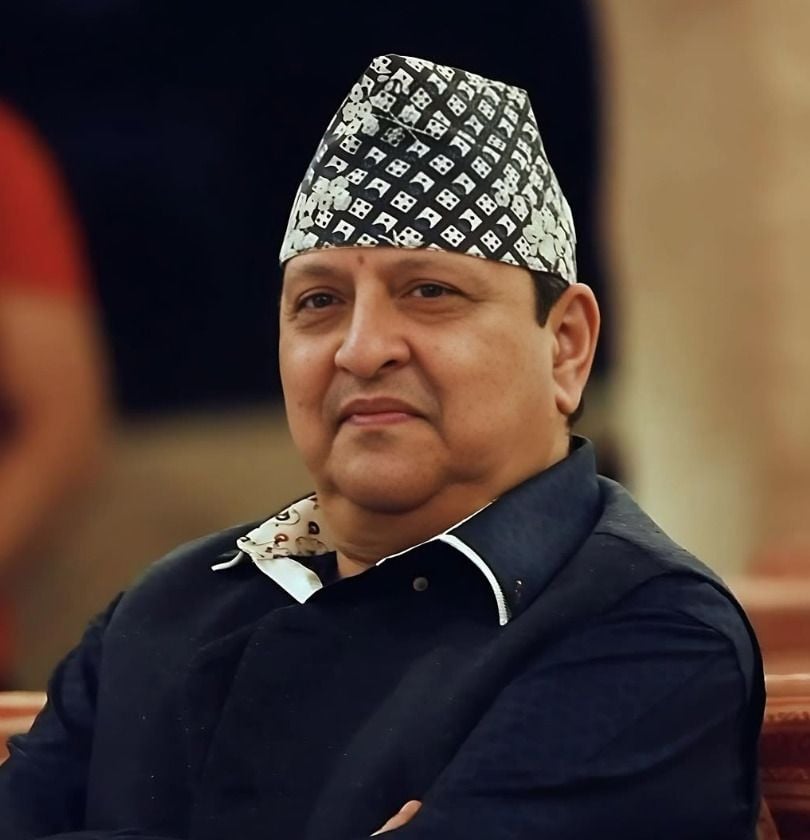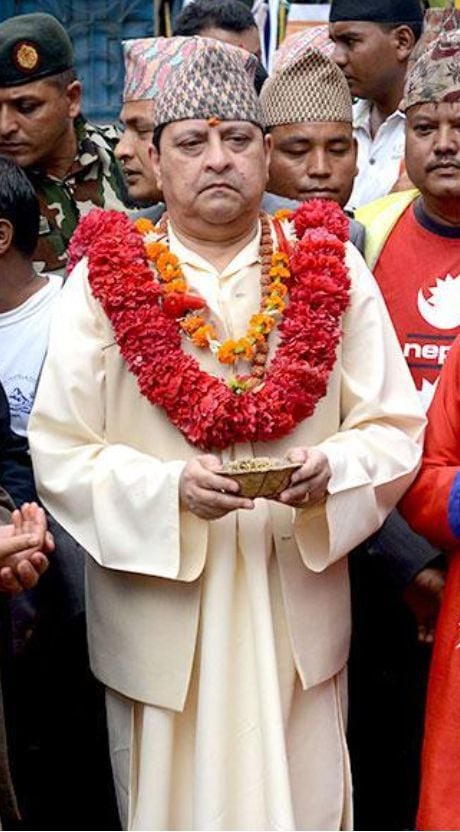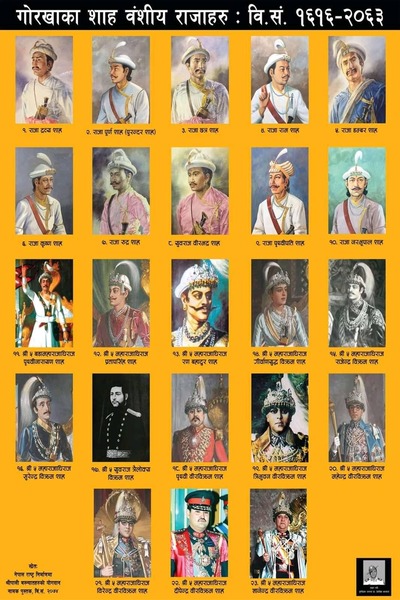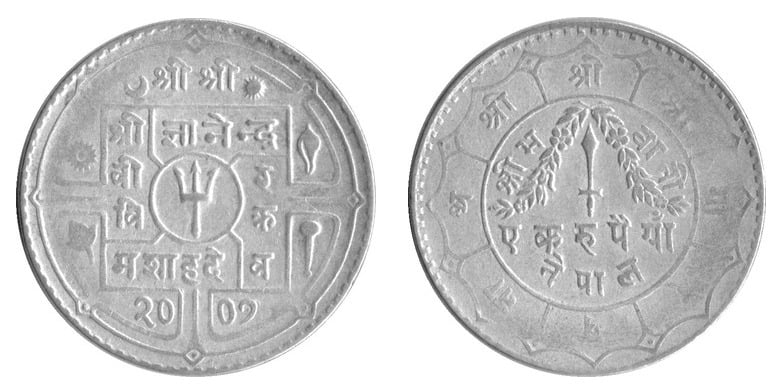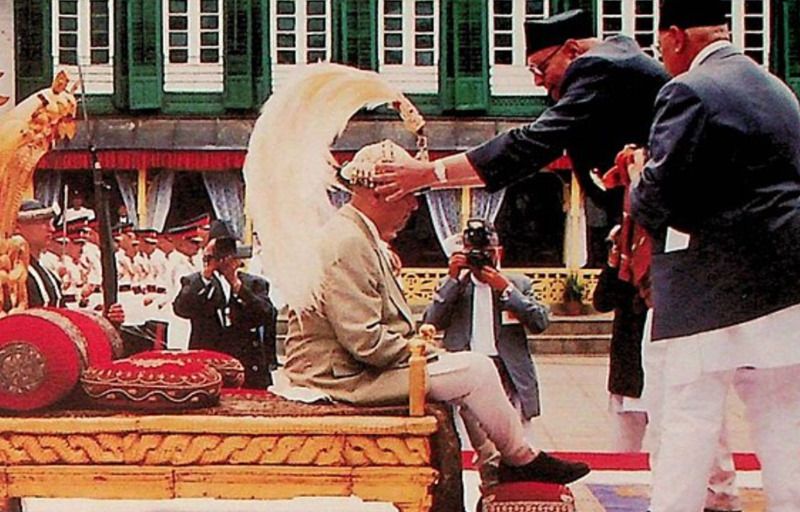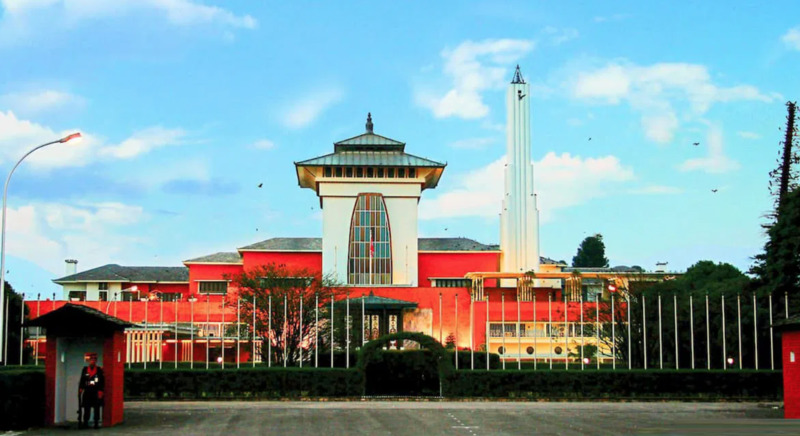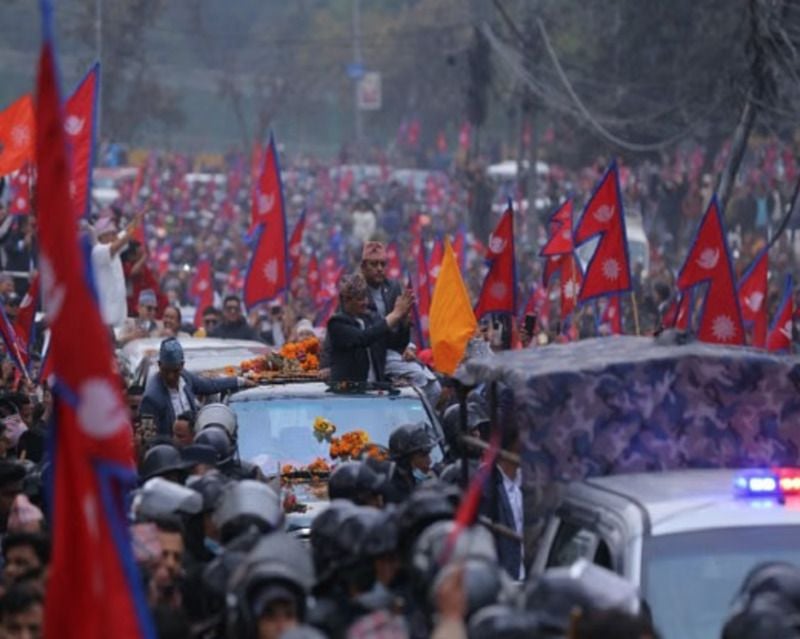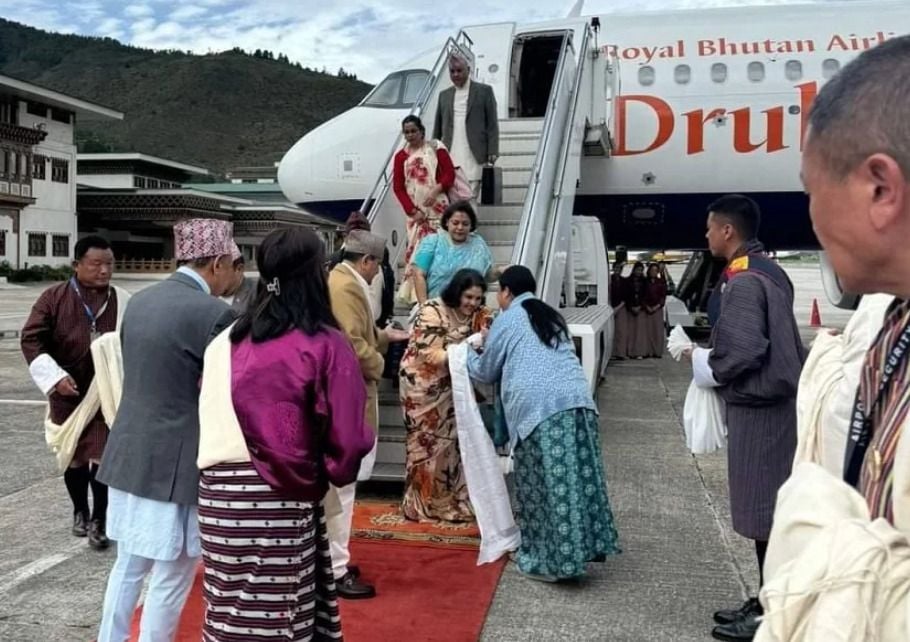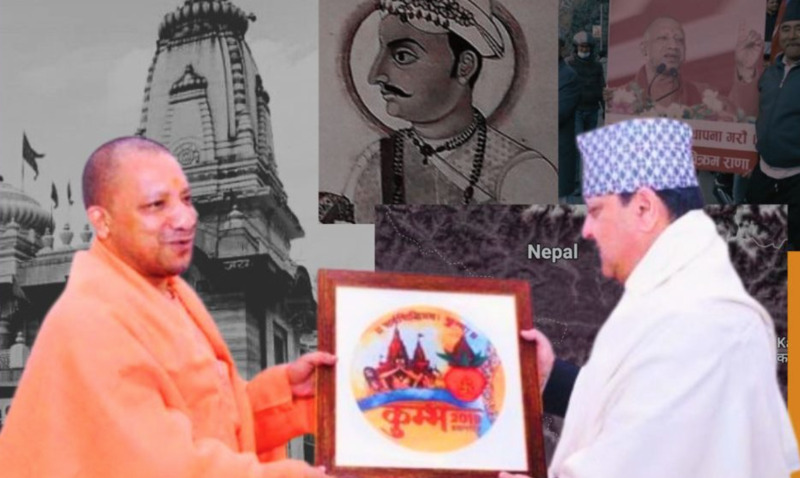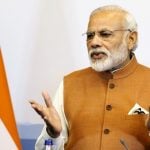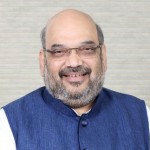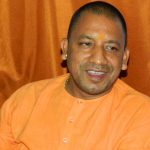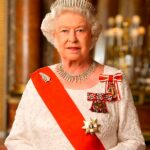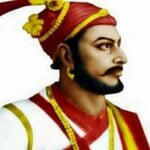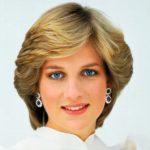Gyanendra Shah Age, Caste, Wife, Children, Family, Biography
Quick Info→
Age: 77 Years
Wife: Queen Komal Rajya Lakhsmi Devi
Hometown: Kathmandu, Nepal
| Bio/Wiki | |
|---|---|
| Full Name | Gyanendra Bir Bikram Shah Dev |
| Reign Name | Shree Paanch Maharajadhiraj Gyanendra Bir Bikram Shah Dev |
| Nickname(s) | Bir Shah |
| Profession | Business Man, Social Activist, Supreme Commander of the Royal Nepalese Army |
| Famous for | Last reigning king of Nepal |
| Physical Stats | |
| Height (approx.) | 5' 7" (170 cm) |
| Eye Colour | Black |
| Hair Colour | Gray |
| Kinghood | |
| Royal Family | Shah Dynasty of Gorkha |
| Title(s), Style | Title: • From his birth until his wedding on 1 May 1970: His Royal Highness Prince Gyanendra • Upon marriage: Prince of Lalitpur Style: • After marriage: His Royal Highness The Prince of Lalitpur • Since his accession: His Majesty The King • After his abdication: His Majesty The King Father |
| Reign | • First Reign: 7 November 1950 – 7 January 1951 • Second Reign: 4 June 2001 – 28 May 2008 |
| Rulling Areas | • Gorkha Kingdom • Kathmandu Valeey Kingdom (Kathmandu, Bhaktapur, and Patan) • Greater Nepal |
| Capital | Kathmandu |
| Coronation | • First Coronation: 7 November 1950 • Second Coronation: 4 June 2001 |
| Predecessor | • First Reign: Tribhuvan Bir Bikram Shah Dev • Second Reign: Dipendra Bir Bikram Shah Dev |
| Successor | • First Reign: Tribhuvan Bir Bikram Shah Dev • Second Reign: Monarchy abolished in 2008 by the president of Nepal (Girija Prasad Koirala) |
| Anthem | Srimān Gambhir |
| Royal Motto | Bidya Mai Chha Maha Shakti; Karma Mai Chha Supujan (Great power lies in knowledge; Better worship lies in action) |
| Currency | Mohar, Ashrafi |
| Awards, Honours | National Honour • Sovereign of the Order of Nepal Pratap Bhaskara (2001) • Sovereign of the Order of Ojaswi Rajanya • Sovereign of the Order of Nepal Taradisha • Sovereign of the Order of Tri Shakti Patta • Sovereign of the Order of Gorkha Dakshina Bahu • Most Glorious Mahendra Chain • King Mahendra Investiture Medal (2 May 1956) • King Birendra Investiture Medal (24 February 1975) • Commemorative Silver Jubilee Medal of King Birendra (31 January 1997) Foreign Honour • Bhutan: King Jigme Singye Investiture Medal (2 June 1974) • France: Grand Cross of the National Order of Merit (2 May 1983) • Germany: Grand Cross of the Order of Merit of the Federal Republic of Germany (25 November 1996) • Pakistan: Nishan-e-Imtiaz (1970) • Saudi Arabia: Member Special Class of the Order of King Abdulaziz (1983) • Spain: Knight Grand Cross of the Order of Isabella the Catholic (19 November 1987) • Thailand: Knight Grand Cordon of the Order of the White Elephant (1995) • United Kingdom: Honorary Knight Grand Cross of the Order of St. Michael and St. George (1986) |
| Personal Life | |
| Date of Birth | 7 July 1947 (Monday) |
| Age (as of 2024) | 77 Years |
| Birthplace | Kathmandu, Nepal |
| Zodiac sign | Cancer |
| Signature | 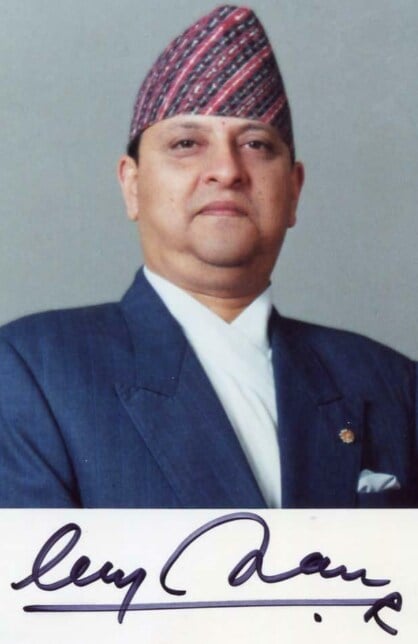 |
| Nationality | Nepali |
| Hometown | Kathmandu, Nepal |
| School | St. Joseph's School, Darjeeling |
| College/University | Tribhuvan University, Kathmandu, Nepal |
| Educational Qualification | Graduation (1969) |
| Religion | Hinduism |
| Caste | Rajput |
| Food Habit | Vegetarian |
| Address | Narayanhity Royal Palace, Kathmandu, Nepal |
| Controversies | • Becoming King After a Tragedy (June 2001) In 2001, Nepal’s royal Shah family faced a shocking event. Crown Prince Dipendra allegedly killed his father King Birendra, mother Queen Aishwarya, and several other family member. He also shoot himself, after killing his family members. After the death of King Birendra and his son Dipendra, Gyanendra Shah, the younger brother of King Birendra, became king. Many people found this sudden change suspicious, however no evidences linked him to the tragedy. [1]Al Jazeera • Removed the Nepal Government (October 2002) In 2002, King Gyanendra Shan removed the Prime Minister and the government, saying they failed to control the Maoist rebels. This made people worried that he was taking too much power. [2]Wikipedia • Took Full Control of Nepal (February 1, 2005) In 2005, King Gyanendra took complete control of Nepal. He removed the government, declared a state of emergency, and said this was necessary to fight the Maoists. But his decision led to several arrests, strict media control, and protests. Many people saw this as the end of democracy in Nepal. [3]Human Right Watch • End of the Monarchy (2008) In 2006, large protests and Government of Nepal forced King Gyanendra Shah to give up the power. In 2008, Nepal’s government officially ended the monarchy and made the country a republic. The king Shah had to leave the Nagarjun Palace, and Nepal no longer had a king. [4]The Guardian • Unpaid Electricity Bills (2016) In 2016, several reports said King Gyanendra had not paid his electricity bills of Nagarjun Palace for over 10 years. The electricity company tried to collect the money, but palace staff refused to pay. This made people question whether the former king was still using his old royal privileges. [5]NDTV • Accussed For Not Paying the Tax (2018) Gyanendra Shah had faced allegation for not paying the tax for his Mahalaxmi Tea Graden in Damark, Nepal property. According to several media housed the he had not paid tax of approximately 40 million Nepalese Rupees. Despite multiple notifications from authorities, the dues remained unsettled. [6]MyRepublica • Protested for Nepal Monarchy(2025) On February 18 2025, King Gyanendra, in a video address, said that he was worried about the state of democracy in Nepal and requested people to support him for unity, peace, and development. He received massive public support during his visit to Galeshwar Dham, Baglung Kalika, and Pokhara, with crowds chanting "Raja aau, Desh bachau". A rally in Kathmandu on 5 March 2025, from the Rashtriya Prajatantra Party (RPP) and Durga Prasai led "Save the Nation, Culture, and Dharma" campaign in support of him. [7]The Indian Express • Accused of fueling pro-monarchy protests in Kathmandu In March 2025, Gyanendra Shah’s passport was seized by the Himalayan country’s government as he was accused of fueling pro-monarchy protests in Kathmandu by several political parties. On 31 March 2025 Nepal's prime minister K P Sharma Oli addressed the nation and said Gyanendra Shah was taking the support from Indian political parties to fuel the protest in Nepal. [8]Times of India |
| Social Media | • Facebook |
| Relationships & More | |
| Marital Status | Married |
| Marriage Date | 1 May 1970 |
| Family | |
| Wife/Spouse | Queen Komal Rajya Lakhsmi Devi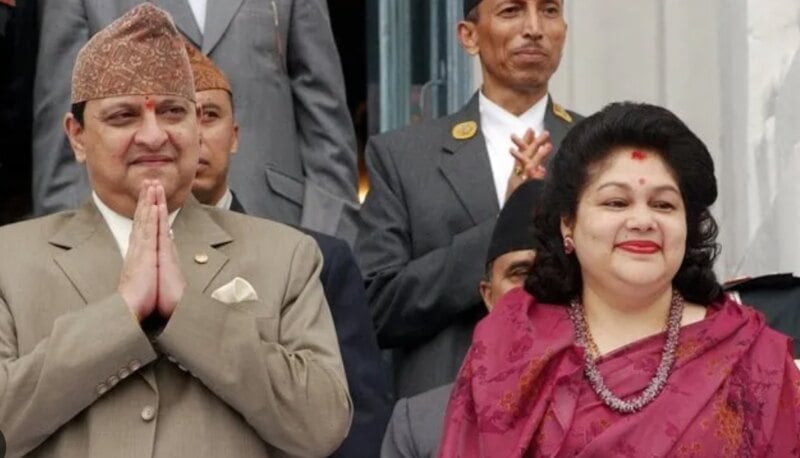 |
| Children | Son- Prince Paras Bir Bikram Shah Dev Daughter- Princess Prerana Rajya Lakshmi Devi Singh 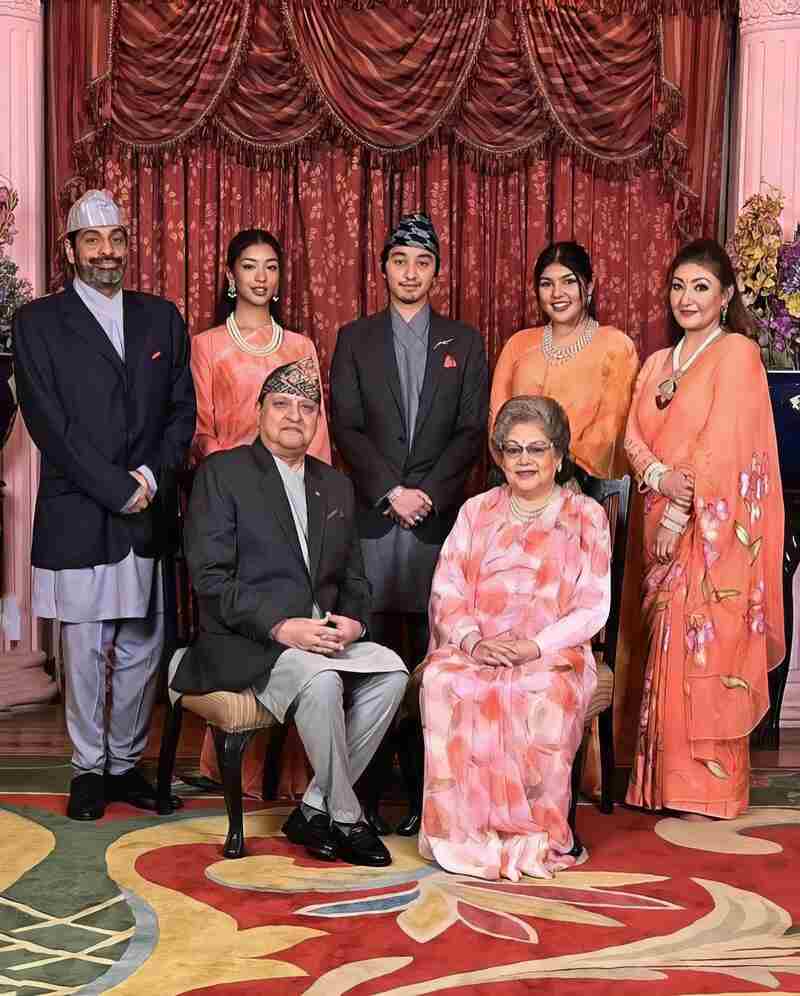 |
| Parents | Father- King Mahendra Bir Bikram Shah Dev (Deceased) Mother- Queen Indra Rajya Lakshmi Devi Shah (Deceased) 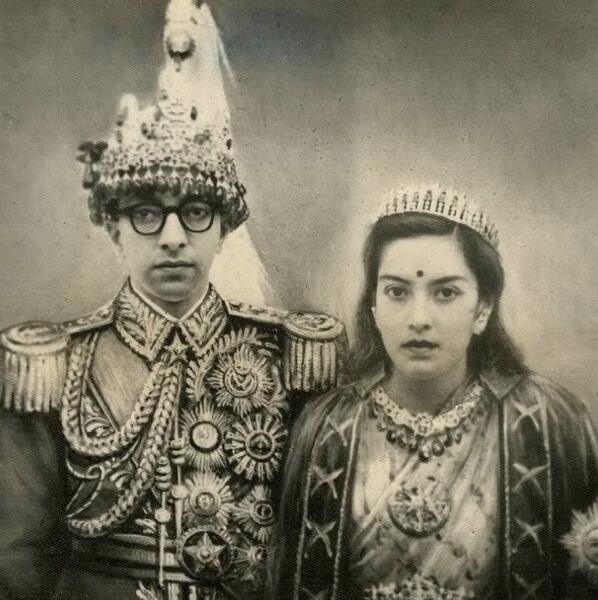 |
| Siblings | Brother(s)- King Birendra Bir Bikram Shah Dev (Deceased)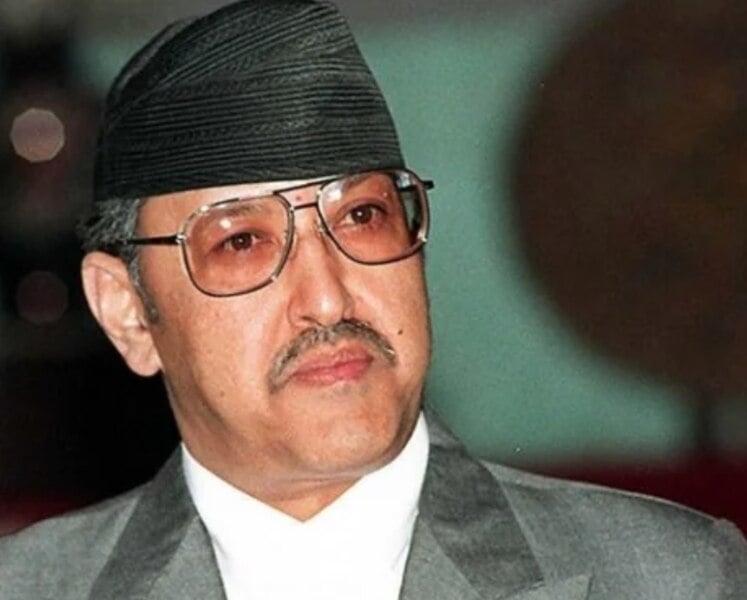 Sister- Princess Sharada Rajya Lakshmi Devi Shah (Deceased) 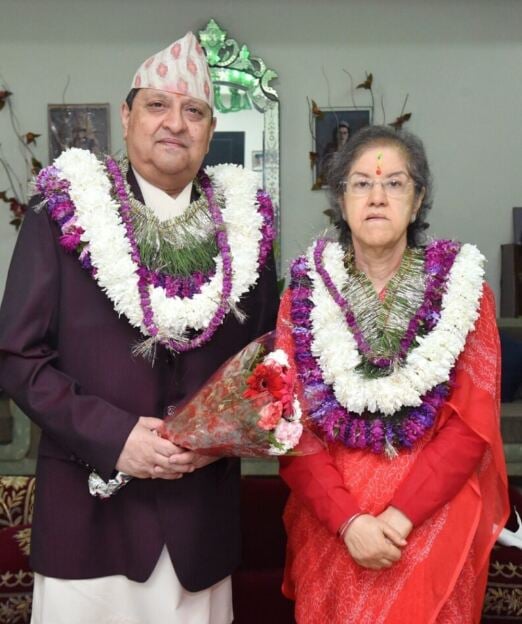 |
| Relatives | Grandfather- King Tribhuvan Bir Bikram Shah Dev (Deceased) Grandmother(s)- • Queen Kanti Rajya Lakshmi Devi Shah (Deceased) • Queen Ishwari Rajya Lakshmi Devi Shah (Deceased) Nephew- King Dipendra Bir Bikram Shah Dev (Deceased) |
| Money Factor | |
| Assets/Properties | • The Soaltee Hotel, Kathmandu • Investment of at least $200 million in 35 companies throughout Nepal and possibly more abroad • Nirmal Niwas Palace, Maharajgunj, Kathmandu • 1.83 heactare land at a prime location at Maharajgunj, Nepal • Valuable Shah and Rana dynasty heirlooms, precious jewels and artwork • An island in the Maldives • Oil mills in Nigeria |
| Net Worth (approx.) | $600 million - $900 million (as of 2024) |
Some Lesser Known Facts About Gyanendra Shah
- Gyanendra Shah was the last reigning king of Nepal from 2001 to 2008, when the monarchy of the Shah dynasty ended.
- He served as the thirteenth King of the Shah dynasty of Nepal.
- When King Gyanendra was born in July 1947, a court astrologer told his father to avoid looking at him because it would bring bad luck to him. Consequently, baby Gyanendra was sent to live with his grandmother at a distant palace in Kathmandu.
- Three years later, in November 1950, during a political plot, his father and his grandfather, King Tribhuvan, and other royals members fled to India, leaving the infant Prince Gyanendra as the only male member of the royal family in Nepal. However, his first reign lasted a little over three months because Gyanendra’s grandfather, King Tribhuvan, returned to Nepal and resumed the throne.
- Prime Minister Mohan Shamsher brought Gyanendra Shah back to the capital, Kathmandu, and declared him king on 7 November 1950. The PM Shamsher also provided a 300,000-rupee annual budget for King Gyanendra Shah’s expenses.
- In 1950, during his reign, coins of his name were also issued.
- Since childhood, he has been keenly interested in wildlife conservation and actively involved in Nepal’s nature reserves.
- Gyanendra was renowned from a young age for his administrative commands.
- In 1970, one year after his graduation, he got married to his second cousin, Queen Komal Rajya Lakhsmi Devi. She was the princess of the royal Rana family of the Chhetri dynasty of Nepal before marriage.
- In 1975, Gyanendra Shah served as the chairman of the Advisory Committee for the coronation ceremony of his brother, King Birendra Bir Bikram Shah Dev.
- He also served as chairman of the King National Trust for Nature Conservation, Nepal, from 1982 to 2001, until his reaccession to the Shah Dynasty kingdom.
- In 1989, Gyanendra Shah opened a business venture called Gorkha Brewery, which introduced the popular beer brand Tuborg to Nepal.
- Gyanendra’s son, Paras, was one of the most disliked royals in Nepali history. In 2000, Paras was involved in a car accident that resulted in the death of a popular Nepali singer, and alcohol was reportedly a factor in the crash. Showing their displeasure with the leadership, 500,000 Nepalis signed a petition urging Paras’s prosecution, but members of the royal family are immune from prosecution unless the king gives permission for that. Reigning King Birendra Bir Bikram Shah Dev did not permit that, and Paras became safe from the accusation.
- In 2001, after the death of his nephew, Crown Prince Dipendra Bir Bikram Shah Dev, Gyanendra Bir Bikram Shah took over the throne and became the new king of Nepal.
- During his early reign, he took complete control of the Nepalese government.
- From 2002 to 2005, he chose and subsequently dismissed three prime ministers for failure in running the country. In February 2005, he dismissed Prime Minister Sher Bahadur Deuba for the second time and took over as absolute ruler of Nepal, promising that the country would return to normality within 36 months.
- In April 2006, the seven political parties alligned together and staged protests and strikes in Kathmandu against King Gyanendra’s direct rule. Seven party leaders and Gyanendra Shah agreed to the supervision of the Indian ruling Congress that the monarchy would have a place in the new constitution.
- Later, the agreement between the parties and Gyanendra under Indian supervision was not honored by the parties, and on 10 June 2006, the Parliament dismissed the major powers of the king, including his right to veto laws.
- In August 2007, Nepal’s government nationalized all the properties Gyanendra, which he inherited from his brother, including the Narayanhiti Royal Palace.
- In 2007, it was announced that the Shah monarchy would probably be suspended in 2008 as part of a peace deal with the Communist Party of Nepal (Maoist) in Nepal.
- In June 2008, the Nepal Government ordered Gyanendra Shah to leave the Narayanhiti Palace in Kathmandu and shift to Nagarjuna Palace, Kathmandu. Shah’s departure with his family from the royal place was reported as a “major symbolic moment in the fall of the Shah dynasty of Neapl.
- After Gyanendra Shah departed from the Narayanhiti Royal Palace, Kathmandu, it was turned into a museum, while Gyanendra’s diamond and ruby-studded Crown and royal scepter, along with all the other crown jewels and royal assets, became government property.
- In an interview in 2012, he said he was not a politician and he would bring the monarchy back to Nepal.
- Gyanendra Shah played a significant role in preserving Nepal’s cultural heritage. He prioritized the restoration of temples, monuments, and historical sites, ensuring that Nepal’s identity as a land of original traditions and architecture remained alive.
- In an interview, Gyanendra Shah once revealed that a written agreement existed between the Nepal politicians and himself that the constitutional royal monarchy would be returned when he gave all his powers to the politicians and can also restored to the house Parliament that he had removed by the Government.
- In 2019, thousands of Nepalese people gathered at his private residence at Nirmal Niwas Palace. He greeted the people but didn’t celebrate his birthday due to the demise of one of his relatives. Therefore, the visitors wrote birthday wishes on registers kept at the Nirmal Niwas Palace.
- In February 2023, Gyanendra Shah attended a public event in the Jhapa district of Nepal, where thousands of supporters gathered. He called for the transformation of Nepal from a secular state into a Hindu kingdom.
- In October 2024, he made his visit to Bhutan at the invitation of the Bhutanese royal family. A red carpet was rolled out upon his arrival.
- Gyanendra Shah has been involved in various philanthropic works. He has donated to education programs, disaster relief efforts, and religious institutions, earning praise for his contributions to society.
- In an interview, he once mentioned that he enjoyed reading books on history, politics and religion.
- Even after losing the throne, he travelled to various countries, including India, China, Bhutan, and Thailand, for personal and diplomatic reasons.
- He was a devout Hindu and attended several religious events and rituals in advocating for Nepal to become a Hindu nation.
- Gyanendra was considered more reserved and serious in public appearances, unlike his brother Late King Birendra, who was known for his warmth appearances.
- Apart from Neapli, he was also fluent in English and Hindi languages.
- Despite belonging to a royal family, he owned many businesses in Nepal and worldwide.
- Due to his strong relationship with India’s political and royal circles, he was also considered for an honorary title in India.
References/Sources:

